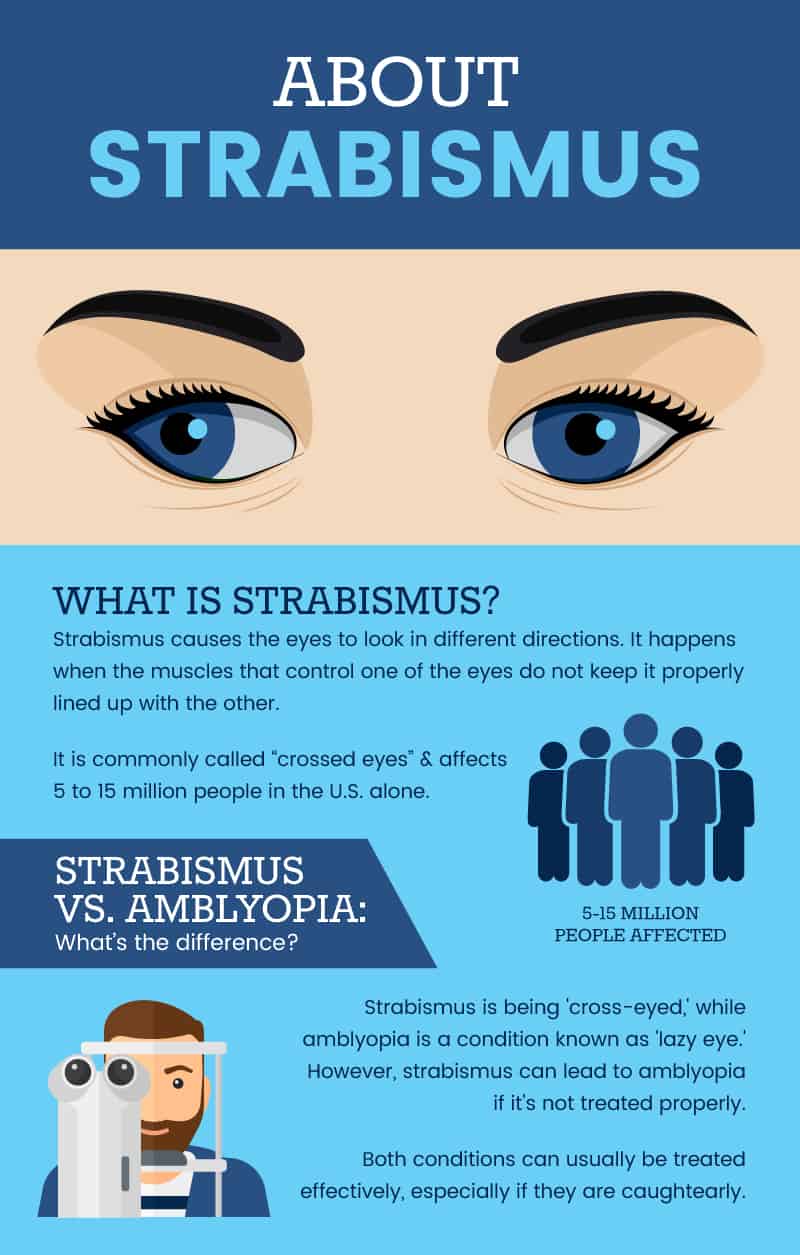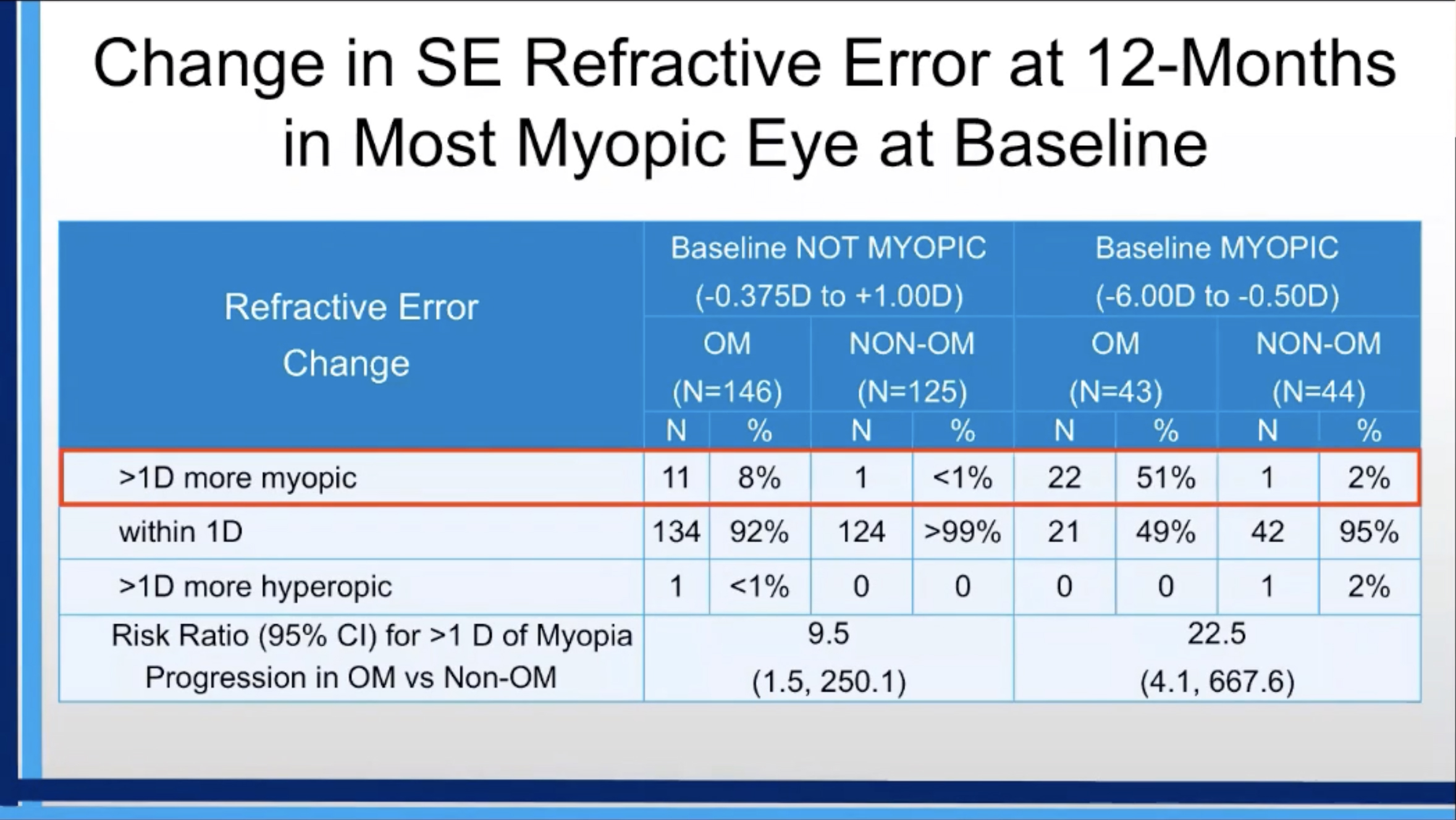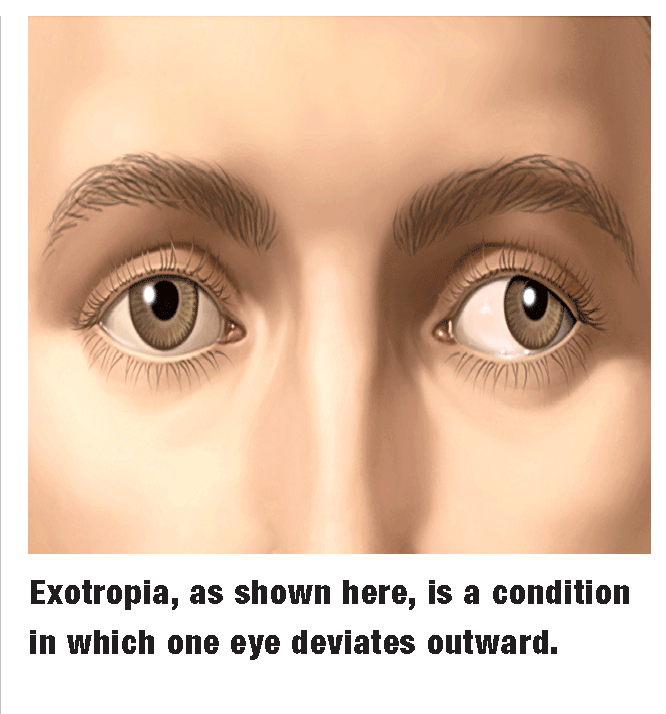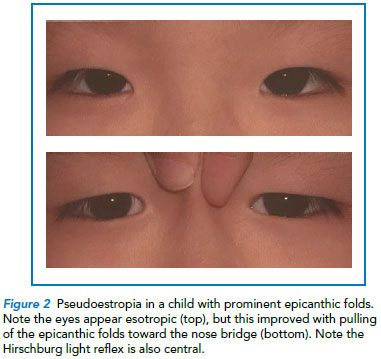[最も人気のある!] exotropia treatment at home 210790-Exotropia treatment exercises
Most intermittent alternating exotropias require optometric vision therapy, which incorporates the prescription of specific treatments in order to enhance fusional ranges, fusional stability, and vergence flexibility enhance accommodative/convergence relationships enhance near point ofExotropia is when the eye turns outwards Diagnosis and Squint Treatment in Ayurveda Along with the squint eye treatment in Ayurveda here are some home remedies for how to cure squint eye naturally Putting 2 drops of ghee in the eyes at bedtime is a nourishing medicineIntroduction We evaluated the effectiveness of officebased vergence/accommodative therapy with home reinforcement for intermittent exotropia in a private practice environment

Strabismus Girl Exotropia Pediatric Ophthalmology Pa
Exotropia treatment exercises
Exotropia treatment exercises-AmblyoPlay works for patients above the age of 3 years – and yes, it does work for adults as well, just the speed of improvement diminishes with age It has been successfully used to treat the following problems amblyopia or lazy eye (all forms,Vision Therapy — strabismus treatment without surgery;




Strabismus Treatments Without Surgery With Exercises Vision Therapy
In another retrospective analysis by Figueira 43 that aimed to identify the best treatment option for intermittent exotropia, it was reported that surgery combined with preoperative orthoptic/occlusion therapy achieved the highest successful treatment rate at the 5 year followup (846%) when compared to surgery alone (25%) Success was defined Exotropia is a common condition It comprises 25% of all ocular misalignment cases in young childrenWhile it could happen periodically (eg, intermittent exotropia), it could also be constant However, it is more typical to find exotropia developed while a child is 1 to 4 years oldVision therapy for both patients consisted of weekly inoffice sessions each lasting 45 minutes, followed by 15 minutes of daily home therapy activities The first five weeks of vision therapy focused on antisuppression, diplopia awareness, gross convergence, and increasing the amplitudes of accommodation
Exotropia is a condition in which the eyes drift outward and away from each other during times of equal visual stimulation It tends to occur regularlyWith or without corrective lenses — is the most effective and noninvasive treatment for Strabismus In a Vision Therapy program, eye exercises, lenses, and/or other therapy activities are used to treat the brain and nervous system which control the eye muscles Treatment of intermittent exotropia Intermittent exotropia should be treated immediately, as any misalignment indicates that the eyebrain connection is not working effectively The most successful treatment for strabismus is vision therapy, usually with other means such as eye patching, eyeglasses, and surgery
The goal of treatment is to get the eyes aligned as much as possible and to improve vision Treatments include Glasses help correct farsightedness or farsightedness will help keep the eyes aligned Patches People with exotropia tend to favor the aligned eye, so vision in the outward eye can be weakened, resulting in amblyopia (lazy eye) ToTreatment options for exotropia are not always the same There are a variety of treatments for exotropia that include surgical correction, vision therapy, prism, or corrective lenses It is important to recognize that not all treatments are curing an exotropia Generally an individual with an exotropia will have a residual deviation but theyIntermittent exotropia is a condition in which one eye turns outwards (diverges) intermittently, mainly when looking at objects in the distance The outward turn may be more noticeable when the child is tired or daydreaming




Management Of Intermittent Exotropia Of The Divergence Excess Type A Teaching Case Report The Journal Of Optometric Education




Non Surgical Management Options Of Intermittent Exotropia A Literature Review Heydarian S Hashemi H Jafarzadehpour E Ostadi A Yekta A Aghamirsalim M Dadbin N Ostadimoghaddam H Khoshhal F Khabazkhoob M J Curr
In their study, two adult patients with BE were subjected to weekly officebased and frequent homebased therapies for 30 weeks At the end of treatment, exotropia at distance and near reduced, the patients achieved the required fusion at all distances, and their symptoms improved Esotropia is a condition that causes the eyes to turn inward It can emerge during the first year of life, or it may appear in adulthood as a resultTreatment of Intermittent Exotropia What is Intermittent Exotropia?




Hypertropia Vertical Strabismus




Squint Treatment Exotropia Neo Eye Clinic
Abstract Intermittent exotropia (X (T)) is one of the most common form of strabismus with surgery being the mainstay of treatment The main goal of surgery is to preserve binocular vision and stereopsis and to prevent its further loss The decision to operate is mainly based on four aspects increasing angle of exodeviation, deteriorating control of X (T), decrease in stereopsis for near orConvergence insufficiency is the inability to maintain binocular function (keeping the two eyes working together) while working at a near distance Typically, one eye will turn outward (intermittent exotropia) when focusing on a word or object at nearExotropia Exotropia causes your eyes to drift outward like exophoria Some of these exercises can take place at home One common exercise is a pencil pushup




Exotropia Best Squint Treatment In Mumbai Eye Solutions



1
Treatment for Exotropia For people whose exotropia does not often occur, observation by an ophthalmologist might be the only treatment needed For people who have more frequent exotropia, the goals for treatment include realigning the eyes, helping both eyes work together properly, and treating double vision and/or amblyopia , or "lazy eyeSmall residual exotropia (15 to 18 prism diopters) – These patients can be managed with nonconservative measures Optical correction – A full correction should be given for any underlying myopic refraction Cycloplegics – Hypermetropes or emmetropes patients can be started on 1% cyclopentolate eye Exotropia is a type of strabismus characterised by outward deviation of an eye If Exotropia affects both eyes, as a result of which the individual is unable to align both eyes, the condition is termed as convergence insufficiency or exophoria Know the causes, symptoms, treatment, prognosis and complications of exotropia




Strabismus Natural Ways To Help Resolve Crossed Eyes Dr Axe




Intermittent Exotropia Management Youtube
Treatment of Intermittent Exotropia Treatment options consist of Vision Therapy, patching, eyeglasses and/or, very rarely, surgery The most successful form of treatment is inoffice supervised Vision Therapy with home reinforcement Therapy changes the brain and is directed at the cause and cure of the problem Childhood exotropia (outward deviation) is a horizontal exodeviation characterised by visual axis forming a divergent angle It usually begins as exophoria Exophoria is a condition in which eyes are straight without deviation when both eyes are open However, eye under cover deviates on coveruncover test or alternate cover test It may progress to exotropia which This is a handy exercise for exotropia Draw three barrels of progressive size in red lengthwise on one side of a card Draw three barrels of progressive size




What Is Strabismus The Optometry Center For Vision Therapy



2
RE Vision Therapy or Surgery for Exotropia by Mrs Hyden Below is a thankyou letter sent to an eye doctor who provides Optometric Visual Therapy or Visual Training It describes her research into treatment options for her daughter's exotropia and her choice of Vision Therapy over surgeryStaying as healthy as possible may also help Feeling sick or having a fever may cause the intermittent exotropia to temporarily occur more frequentlyNew Research Sheds Light on Intermittent Exotropia Surgical correction of intermittent exotropia is a breadandbutter procedure for many pediatric ophthalmologists But a recent study in the British Journal of Ophthalmology ( BJO) 1 and an accompanying editorial 2 call into question the notion that intermittent exotropia is straightforward or




Strabismus Treatments Without Surgery With Exercises Vision Therapy




Providers In Charlotte Who Treat Strabismus
Treatment for exotropia depends on how often you have symptoms and on how severe they are Prism in your glasses may be prescribed to help with double vision Eye muscle surgery is also an option, especially if your exotropia isTreatment of Intermittent Exotropia In contrast to esotropia, which requires urgent intervention, the treatment of intermittent exotropia is elective These children have binocular fusion and are well aligned most of the time Eye muscle surgery is the treatment of choice for most forms of intermittent exotropia The treatment of incomitant deviations consists of treatment of the primary condition Intermittent Exotropia This is the most common form of exotropia and accounts for about 50–90% of all the




How To Fix Exotropia 9 Steps With Pictures Wikihow




Control Of Intermittent Exotropia Should Be Assessed With Control Of Intermittent Exotropia Should Be Assessed With
Common sense approaches may help to control intermittent exotropia For example, getting the recommended amount of sleep for age is important—many children don't! The assessment of control of intermittent exotropia is essential to obtain a baseline evaluation as well as to monitor deterioration and progression of intermittent exotropia Subjective Methods Home Control The parents may be told to keep a chart noting the control of deviation at home in terms of the percentage of waking hours the manifest Vision therapy (VT) is a commonly prescribed treatment for children with intermittent exotropia (IXT) The effectiveness of VT as a treatment modality for children with IXT is unknown because previous studies have largely limited observational or retrospective case series without comparison groups



Strabismus




Starbismus Procedures Gardena Heterotropia Exams Gardena Crossed Eyes Gardena
For mild cases of exotropia, eyelasses and/or vision therapy (eye exercises) are the most common treatment methods Eyeglasses are used to make each eye see as well as possible so that the eyes will work together as a teamTreatment of Intermittent Exotropia Treatment options consist of Vision Therapy, patching, eyeglasses and/or, very rarely, surgery The most successful form of treatment is inoffice supervised Vision Therapy with home reinforcement Therapy changes the brain and is directed at the cause and cure of the problemTreatment for esotropia and exotropia aims to ensure proper vision in both eyes and straighten the eyes Among the treatment options for esotropia are Glasses to correct vision problems such as nearsightedness, farsightedness or astigmatism;




What Do Patients Experience Before Exotropia Treatment Youtube



1
Strabismus, or squint, means that one or both eyes are not aligned straight and forward With exotropia specifically, the eyes turn outwards It is unlikely that "Crossed eyes" is referring to exotropia, it instead refers to esotropia, where the eyesTreatment of intermittent exotropia Treatment recommendations depends on the severity of the problem, on the signs and symptoms, and on the patient and family desires When the drifting eye movement is mild, observation may be all that is needed Sometimes, the condition will remain the same over a long period of time or may even get betterExotropia is a type of squint or strabismus or eye misalignment In exotropia, the eye deviates away from the nose It usually appears in older children and gradually worsens Sometimes children are born with this type of squint In the first picture, the right eye is deviating outwards whereas in the second picture it's the left eye




Vision Therapy For Intermittent Exotropia A Case Series Journal Of Optometry




Signs And Symptoms Of Binocular Vision Problems
Exotropia treatment Treatment will vary depending on the severity of exotropia Some cases will have a relatively simple treatment plan, but others may require surgery Intermittent exotropia, which occurs occasionally, may only need to be monitored Nonsurgical exotropia treatment If exotropia is constant, an eye doctor may recommendPatching of the good eye, to improve vision in the lazy (amblyopic) eyeExotropia is a common form of strabismus characterized by an outward eye turn, away from the nose Exotropia is a eye turn where one eye points outwards, this may be noticed while the child is looking at distance objects, near objects or both




Squint Treatment Without Surgery In India Sanjeevan




Strabismus Girl Exotropia Pediatric Ophthalmology Pa
Both groundin prisms and temporary stickon prisms have been described in the treatment of intermittent exotropia Basein prisms can be used to neutralize the deviation to stimulate fusion, or to overcorrect the deviation in the hope of reducing the deviation, 38 but this treatment modality is not commonly used today OverMinus GlassesIntermittent exotropia is the most common form of exotropia and it is estimated that approximately 3% of Chinese teenagers suffer from this condition 1 The treatment of intermittent exotropia includes watchful observation, 2,3 patching, 2,3 prism, 4,5 overminus lens, 6 vision therapy 7–13 and surgery 14,15 Currently, there is no consensus regarding which treatment modality is the Engaging patients (parents/families) in treatment decisions is increasingly recognised as important and beneficial Yet where the evidence base for treatment options is limited, as with intermittent distance exotropia (X(T)), this presents a challenge for families and clinicians The purpose of this study was to explore how decisions are made in the management




Sizing Up Strabismus




Lazy Eye Exercises 8 Exercises And Other Treatments
How is exotropia treated?Without treatment, 75% of children with exotropia will worsen over time If your child suffers from exotropia, please consult with one of our eye doctors at Eye Consultants of Pennsylvania in Reading PA, and the Pottsville, Pottstown areasDepends on severity treatment for alternating exotropia includes observation, patching, glasses, penalization with Atropine, exercises, and surgeryit all depends on how Read More 23k views Answered >2 years ago Thank




Overminus Lenses Associated With Myopia Progression




Home Exercises For 7 Year Old With Intermittent Alternating Exotropia Strabismus




How To Fix Exotropia 9 Steps With Pictures Wikihow




Types Of Strabismus Vector Illustration Medical Knowledge Eye Exercises Medical Student Motivation




Non Surgical Correction Of Exotropia Dr Claudia Lee Optometrist




How To Fix Exotropia 9 Steps With Pictures Wikihow




How To Fix Exotropia 9 Steps With Pictures Wikihow




Exotropia Symptoms Management And More




A Randomized Trial Comparing Part Time Patching With Observation For Intermittent Exotropia In Children 12 To 35 Months Of Age Ophthalmology




Management Of Intermittent Exotropia Of The Divergence Excess Type A Teaching Case Report The Journal Of Optometric Education




Strabismus Screening Now There S An App For That




Lazy Eye Treatment In Tucson Tucson Amblyopia Lazy Eye Treatment Tucson




Exophoria




Intermittent Divergent Squint In Prematurity And Its Neurophysiological Aspects Abstract Europe Pmc




Management Of Intermittent Exotropia Of The Divergence Excess Type A Teaching Case Report The Journal Of Optometric Education




Strabismus Screening Now There S An App For That




3 Proven Exercises For Strabismus Lazy Eye Selectspecs Glasses Blog




Pdf Outcome Of Strabismus Surgery And Vision Therapy In A Case Of Intermittent Exotropia




What Is Convergence Insufficiency




Soft Wireless Periocular Wearable Electronics For Real Time Detection Of Eye Vergence In A Virtual Reality Toward Mobile Eye Therapies




11 Exotropia Info Ideas Vision Therapy Eye Exercises Vision Eye




Role Of Overminus Therapy In Intermittent Exotropia Mangad Se Mohan L Vijayalakshmi M S Krishnan P Babu Sp Kerala J Ophthalmol




Squint Eye Treatment For Children Pediatric Ophthalmology For Surgery




Vision Therapy For Intermittent Exotropia A Case Series Journal Of Optometry



Secondary And Consecutive Exotropia American Academy Of Ophthalmology




Intermittent Xt




How To Fix Exotropia 9 Steps With Pictures Wikihow




Exotropia Central Eye Care




Strabismus Natural Ways To Help Resolve Crossed Eyes Dr Axe




Can Contact Lenses Correct A Squint Eye Health Central




How To Fix Cross Eyes Naturally Image Optometry




How To Fix Exotropia 9 Steps With Pictures Wikihow




Do You See A Pattern




What Is Exotropia Causes Symptoms Treatment Prognosis Complications




Vision Therapy Exercises At Home In Cromwell Ct 4d Vision Gym




Strabismus Exotropia Esotropia Cover Test Geeky Medics




Conservative Management Of Intermittent Exotropia To Defer Or Avoid Surgery Journal Of American Association For Pediatric Ophthalmology And Strabismus Jaapos




3 Eye Exercises For Strabismus Healthline




Exophoria




Exotropia Types Symptoms Diagnosis Treatment Prevention




How Is Intermittent Exotropia Treated




Exotropia American Association For Pediatric Ophthalmology And Strabismus




11 Exotropia Info Ideas Vision Therapy Eye Exercises Vision Eye




Exophoria Definition Treatment And How It Compares To Exotropia



1




Exotropia Pediatric Ophthalmic Consultants




What Is Exotropia Vision For Life Success Vision Therapy Center




Strabismus Causes And Treatments




Management Of Intermittent Exotropia Of The Divergence Excess Type A Teaching Case Report The Journal Of Optometric Education




3 Eye Exercises For Strabismus Healthline




Treating Adult Strabismus Ophthalmologists For Adult Strabismus




3 Eye Exercises For Strabismus Healthline




What Is Exotropia Vision Express




Vision Therapy Prosper Family Eyecare And Vision Development Center



Can You Control Mild Exotropia With Contact Lenses Finding Ways To Improve Your Health Naturally




Rop Cap L V Prasad Eye Institute Eye Exercises Vision Therapy Lazy Hairstyles




3 Proven Exercises For Strabismus Lazy Eye Selectspecs Glasses Blog




3 Simple Ways To Cure A Lazy Eye In Adults Naturally Wikihow




Cross Eyes Symptoms Causes Treatment Medicine Prevention Diagnosis




Strabismus Cross Eyed Or Wall Eyed Condition All About Vision




Exotropia In Cromwell Ct 4d Vision Gym




Strabismus Children S Health Issues Merck Manuals Consumer Version




Exotropia Central Eye Care




Vision Therapy Success Story Strabismus Exotropia Eye Turn Outward Vision Therapy Philippines




Management Of Squint With Near Distance Angle Disparity Eye News




How To Fix Exotropia 9 Steps With Pictures Wikihow



Vision Therapy For Intermittent Exotropia A Case Series Journal Of Optometry




A Nail In The Coffin Of Over Minus Lens Treatment For Intermittent Exotropia The Visionhelp Blog




Pdf Orthoptic Treatment In The Management Of Intermittent Exotropia




How To Fix Exotropia 9 Steps With Pictures Wikihow




Pdf Intervention For Intermittent Distance Exotropia With Overcorrecting Minus Lenses Semantic Scholar




Management Of Intermittent Exotropia Of The Divergence Excess Type A Teaching Case Report The Journal Of Optometric Education




What Is Intermittent Strabismus Optometrists Org




Exotropia Eyes Turn Outward Causes Symptoms Treatment Vision Center




Strabismus And Motility Omni Eye Services




Intermittent Xt




Common Strabismus In Children A Brief Overview Singhealth




How To Fix Exotropia 9 Steps With Pictures Wikihow




Exotropia Types Symptoms Diagnosis Treatment Prevention




Management Of Squint With Near Distance Angle Disparity Eye News
コメント
コメントを投稿